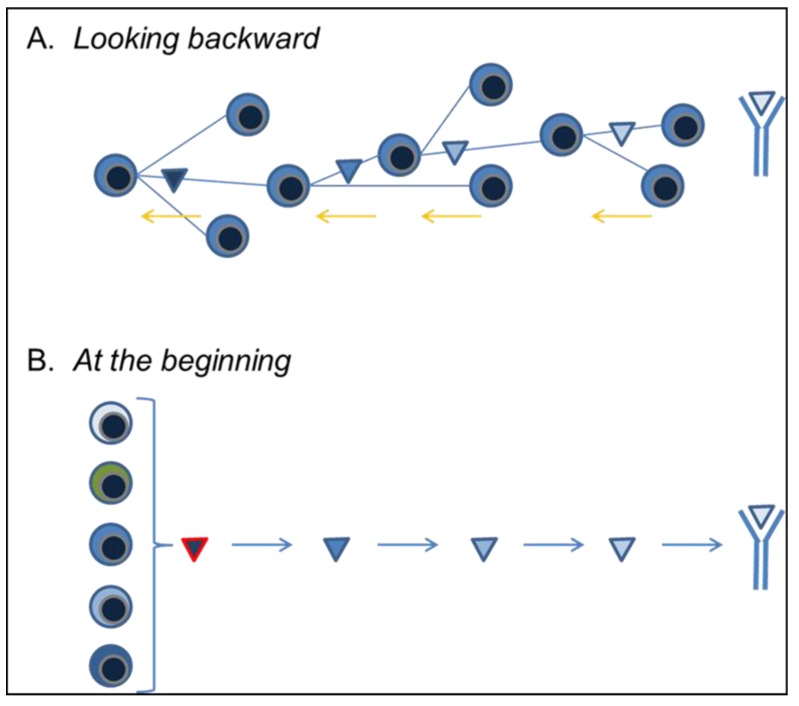Figure 1.
Synopsis of proposed vaccine strategies. (A) The B-lineage vaccine approach to eliciting HIV-1 bnAb responses in vaccinees is based on the recapitulation of clonal evolutionary pathways that lead to bnAb in a single HIV infected patient [2,54]. This approach relies on the technical capacity to identify, recover, and characterize bnAb B cells and/or plasmacytes from HIV-1 infected patients. BCR encoding gene rearrangements isolated from single bnAb cells are then used to to follow the bnAb response backwards, in effect, reversing B-cell evolution to identify antigen-ligands that might re-create this (or comparable) bnAb pathways in many individuals [2]. In this way, vaccine ligands can be generated and optimized to select for the desired—bnAb—evolutionary pathway; (B) The ancillary approach is us to identify those cells in the naïve B-cell pools capable of recognizing HIV-1 neutralizing epitopes and/or optimized, lineage design, vaccine immunogens. In this approach, cultured B cells are driven to proliferate by exposure to CD154 and immunogens capable of driving bnAb production can be modified to activate the largest possible pool of specific B cells. In consequence, we can study HIV-1 antigen epitopes without regard to their ability to elicit significant humoral responses: antigenicity minus immunogenicity.

